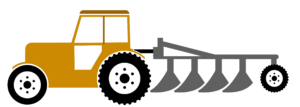Weed Control: Focus on Young Plants

As the range of chemical options is shrinking, sorghum weed control becomes more complex. Regardless of the method, the key is to target the young weed plants, without, however, forgetting about mechanical cultivation.
In France, the spring of 2024 will have been the last one in which producers were allowed to use S-metolachlor to control sorghum weeds. As of October 20, 2024, the substance will no longer be available for that use. At the EU level, no decision has been made as to the renewal or re-authorizing of this active ingredient. From now on, sorghum producers will have to content themselves with fewer and fewer chemical products.
Pre-, or Post-, Emergence? It All Depends on the Weed Species
Sorghum is particularly sensitive to weed competition in its early stages – especially by summer grasses. Good knowledge of the weed history of one’s plots allows one to identify the weeds that need targeting first. A treatment after planting and before emergence will focus on grasses above anything else. At that stage, the number of options is limited and consists mainly in Alcance Synch Tec and CalliprimeXtra products. As to the specialized products of the chloride family, they should be applied starting with the 3-leaf stage of sorghum, to avoid any risk of phytotoxicity – and on very young weeds, for higher efficiency.
A treatment in the early stages of emergence, around the 3 leaves of sorghum, will target grasses primarily, using for instance a chloroacetamide (from Isard, Dual GS, or Juan). Adding an anti-dicotyledonous product will broaden the spectrum of action. Lastly, repeat treatments can be done at 4 to 8 leaves of sorghum, in order to target above all the dicotyledonous and/or the perennial species.
Not to Be Ignored: Mechanical Cultivation
Sorghum is well-suited for machinery practices – which are a proven complement to chemicals. Thus one may use a spring-tooth harrow or a rotary hoe a few days after planting. Once past the 3-leaf stage, one or more cultivations can be carried out. The point is to go in when soil conditions are “drying”, in order to prevent weeds from re-emerging.
Continue ?
Sorghum gives you the floor

European Sorghum Congress















